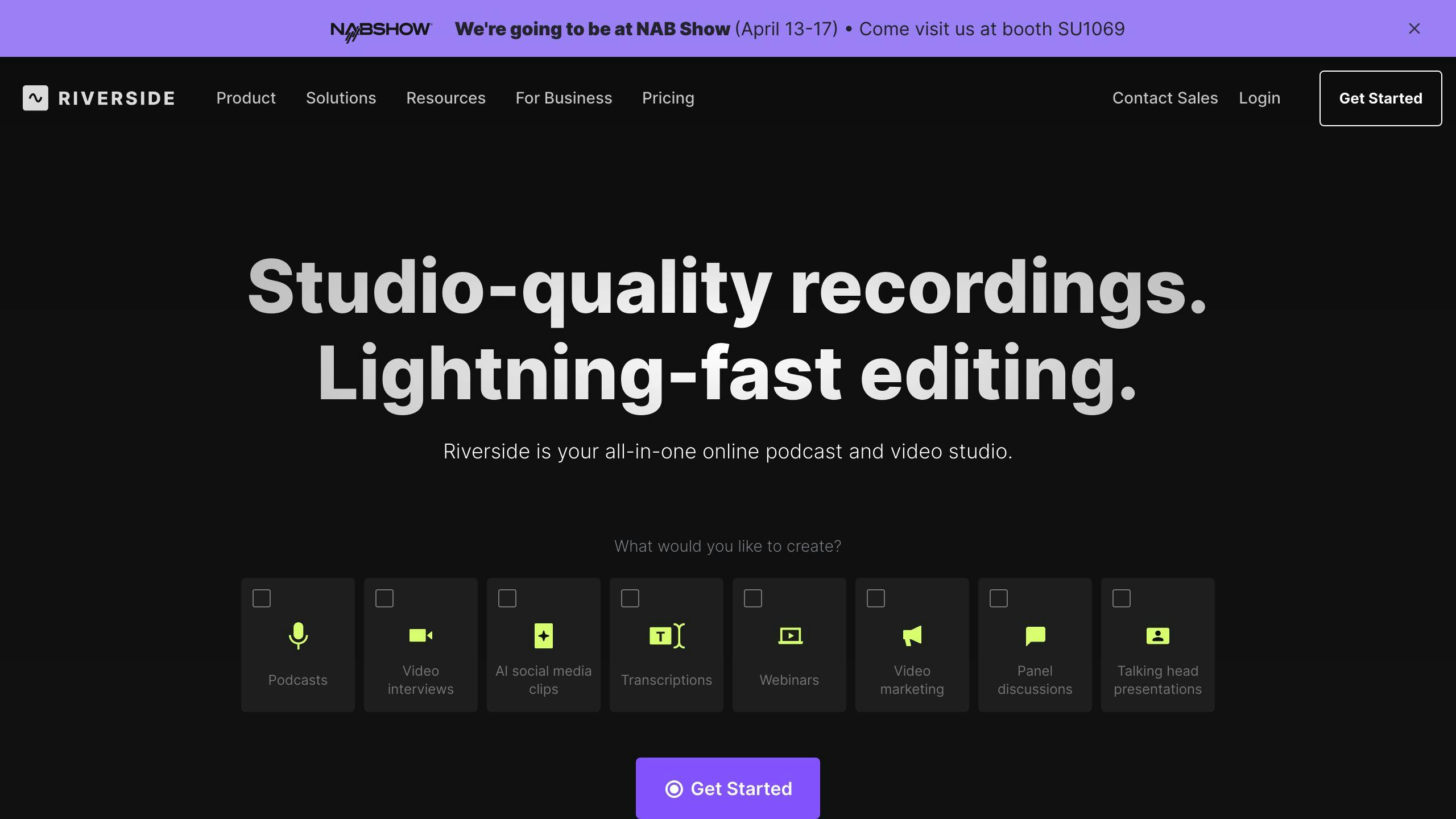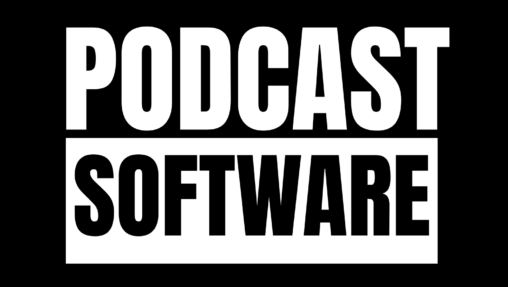Looking to create high-quality podcasts with remote guests? Riverside and SquadCast are two leading platforms offering multi-track recording, but they differ in features, pricing, and capabilities. Here’s a quick breakdown:
- Riverside: Offers 4K video recording, AI editing tools, and 15 hours of recording for $24/month.
- SquadCast: Focuses on studio-quality audio, team collaboration, and Captivate integration, with 5 hours of recording for $40/month.
Quick Comparison
| Feature | Riverside | SquadCast |
|---|---|---|
| Video Quality | 4K | Up to 1080p |
| Recording Hours | 15 hours ($1.60/hr) | 5 hours ($8/hr) |
| Editing Tools | AI-powered tools | No built-in editor |
| Special Features | Live streaming, mobile app | Captivate integration, team-friendly interface |
| Pricing | $24/month | $40/month |
Riverside is ideal for creators prioritizing video quality and advanced editing tools, while SquadCast excels in team collaboration and workflow integrations. Choose based on your podcasting style and needs.
Features of Riverside and SquadCast

Multi-Track Recording
Riverside and SquadCast both support multi-track recording, which provides separate audio tracks for each participant. This is a must-have for professional podcast production, as it lets editors adjust individual voices with precision.
Riverside takes this a step further with automatic multi-track recording that captures audio locally on each participant’s device. This ensures consistent quality, even if the internet connection is unstable. It also supports video recording up to 4K resolution for crystal-clear visuals [1] [2].
SquadCast, on the other hand, delivers HD multi-track recording (720p to 1080p), which is well-suited for most podcasting needs. It reliably captures separate tracks for each participant [1].
Both platforms also use local recording and progressive uploads to maintain the integrity of your content.
Local Recording and Progressive Uploads
Local recording and progressive uploads are key features for both Riverside and SquadCast. These technologies ensure your recordings are safe and high-quality, even during technical hiccups. Here’s a quick comparison:
| Feature | Riverside | SquadCast |
|---|---|---|
| Local Recording | Automatically saves high-quality files locally on each device | Local recording with backup systems |
| Upload Process | Real-time progressive uploads | Progressive uploads during the session |
Local recording ensures that high-quality files are saved directly to participants’ devices, creating a safety net in case of connectivity issues. SquadCast also uses local recording but manages files differently. While it doesn’t include a built-in multi-track editor, it integrates well with external editing tools [3].
Riverside goes a step further by offering a built-in editor, making it a convenient all-in-one option for podcasters who want to streamline their workflow.
Distinct Features of Each Platform
Riverside’s Features
Riverside offers powerful tools for recording and editing, including 4K video recording, making it ideal for creating professional-quality content [1]. Its AI transcription service supports over 100 languages, catering to podcasters with international or multilingual audiences [1]. Additionally, the platform’s AI editing tools simplify the task of creating promotional clips.
One standout feature is Riverside’s live-streaming capability, which allows podcasters to broadcast their sessions in real-time while still recording high-quality separate tracks for post-production [4]. This feature differentiates it from SquadCast.
SquadCast’s Features
SquadCast integrates seamlessly with Captivate, streamlining session booking and guest coordination [1]. Its team-friendly interface makes it a great choice for collaborative podcasting projects [3]. While SquadCast records video at resolutions between 720p and 1080p, it prioritizes studio-quality audio by recording each participant’s sound on separate tracks [3].
| Feature | Riverside | SquadCast |
|---|---|---|
| Built-in Editor | AI-powered editor with transcription | No built-in multi-track editor |
| Special Features | Live-streaming capability, Mobile recording app | Captivate integration, Team-focused interface |
| Audio Processing | Multiple audio format support | Studio-quality sound on separate tracks |
Both platforms excel in multi-track recording while offering unique tools tailored to different podcasting needs. These features provide podcasters with options that suit various production and collaboration styles. Next, let’s take a closer look at how their pricing reflects these capabilities.
SquadCast vs Riverside FM: Pros and Cons Comparison for Podcast Recordings (2024)
sbb-itb-9f49a8d
Pricing Details
Riverside and SquadCast have noticeable differences when it comes to cost and what they offer.
Riverside Pricing
Riverside charges $24/month for 15 hours of recording. This plan includes features like AI editing tools and separate track recording for each participant. At just $1.60 per hour, it’s a budget-friendly option for podcasters who record frequently.
SquadCast Pricing
SquadCast costs $40/month for 5 hours of recording. It offers studio-quality audio, Captivate integration, and team collaboration tools, but the higher price and fewer hours make it a more premium option.
| Feature | Riverside Pro | SquadCast Basic |
|---|---|---|
| Monthly Cost | $24 | $40 |
| Recording Hours | 15 hours | 5 hours |
| Cost per Hour | $1.60 | $8.00 |
| Video Quality | 4K | Up to 1080p |
| Local Recording | Yes | Yes |
| AI Editing Tools | Included | Not included |
For those looking at long-term affordability, Riverside provides three times the recording hours at a lower monthly cost [1]. On the other hand, if features like Captivate integration and team collaboration are must-haves, SquadCast might be worth the extra expense despite offering fewer hours [3].
Now that we’ve broken down the pricing, let’s dive into the pros and cons of each platform to help you make the best choice for your needs.
Pros and Cons
Here’s a breakdown of the strengths and limitations of Riverside and SquadCast to help you decide which platform aligns with your needs. The table below compares their key features.
Comparison Table
| Aspect | Riverside | SquadCast |
|---|---|---|
| Video Quality | 4K video capability | HD quality up to 1080p |
| Recording Features | Local recording, progressive uploads, mobile app | Studio-quality audio with real-time collaboration; no mobile app |
| Editing Capabilities | AI tools for transcription, editing, and promotional clips | Basic editing features; no multi-track editor |
| Integration & Workflow | One-click promotional clips, customizable backgrounds; fewer integrations | Captivate integration, guest coordination tools |
| Cost | $1.60/hour for 15hrs | $8/hour for 5hrs |
The best choice depends on your priorities. Riverside stands out for its 4K video capability and AI-driven editing tools, making it a strong option for creators focused on video quality and post-production. Plus, its pricing offers more hours at a lower cost [1].
On the other hand, SquadCast justifies its higher price with features like real-time collaboration and Captivate integration [3]. Its streamlined guest coordination tools are perfect for podcasters who regularly host remote guests and need a smooth workflow.
In short, Riverside is ideal for creators who value advanced video and editing features, while SquadCast caters to teams prioritizing collaboration and efficiency. With these distinctions in mind, you can choose the platform that best fits your podcasting style.
Conclusion
Riverside and SquadCast cater to different podcasting needs, each offering tools tailored to specific priorities. Riverside shines in delivering high-quality video and advanced post-production features, making it ideal for creators aiming for polished, professional results. Its feature set and pricing make it a strong option for podcasters who need a full suite of production tools.
On the other hand, SquadCast focuses on smooth Captivate integration and an easy-to-use workflow, making it a great fit for teams that prioritize collaboration and managing guest interactions. While its pricing leans toward the premium side, its tools for team coordination and efficiency are well-suited for certain production styles.

